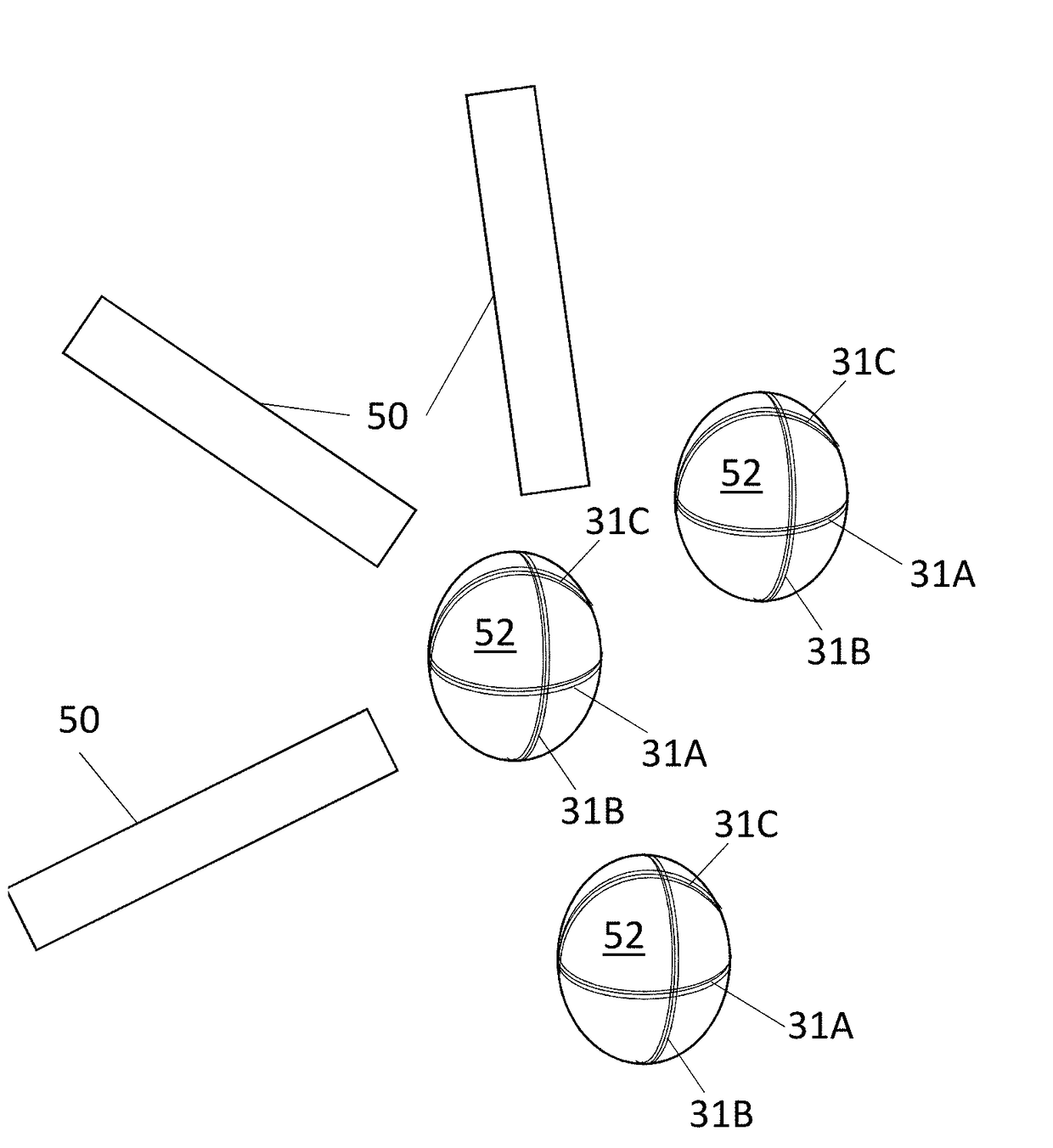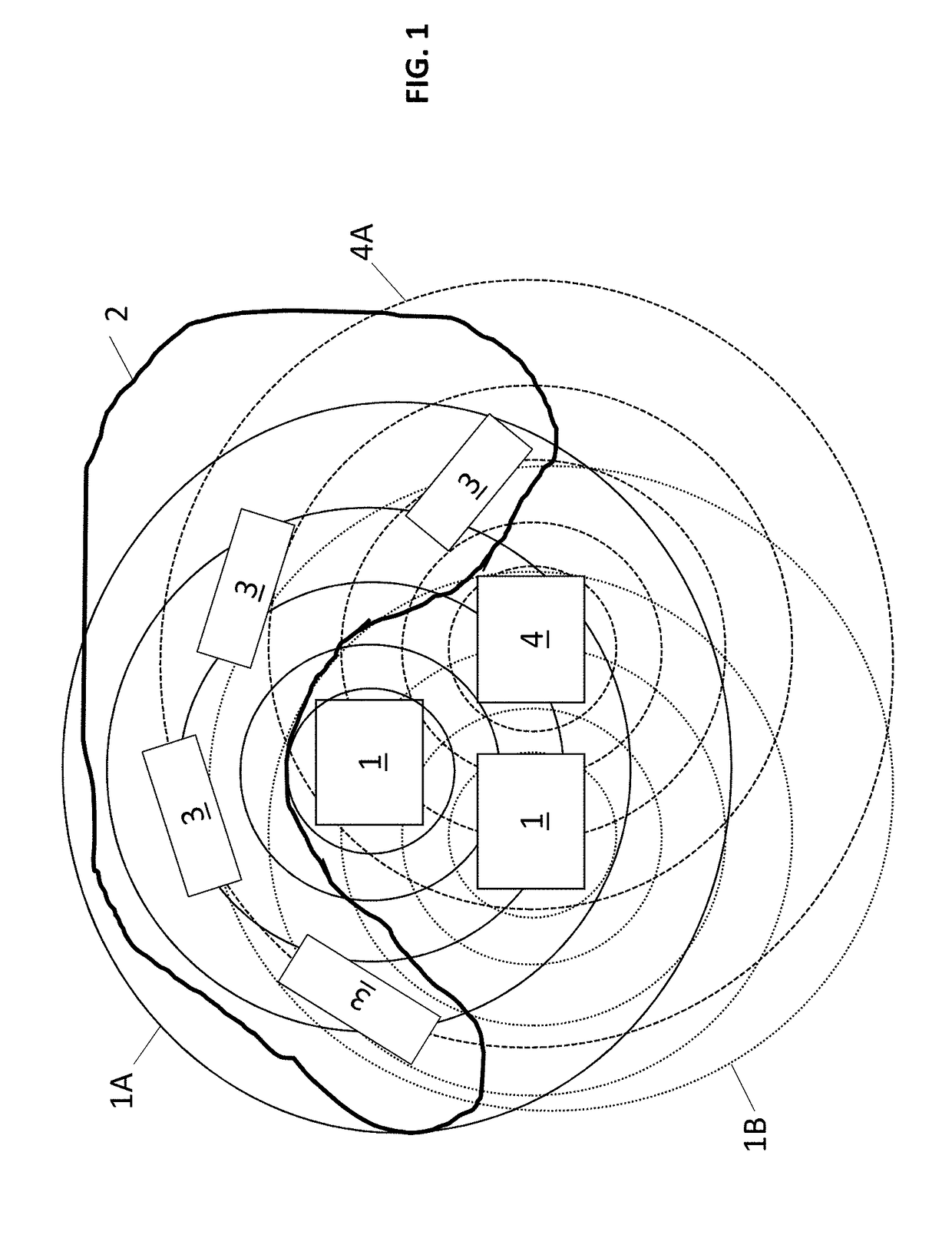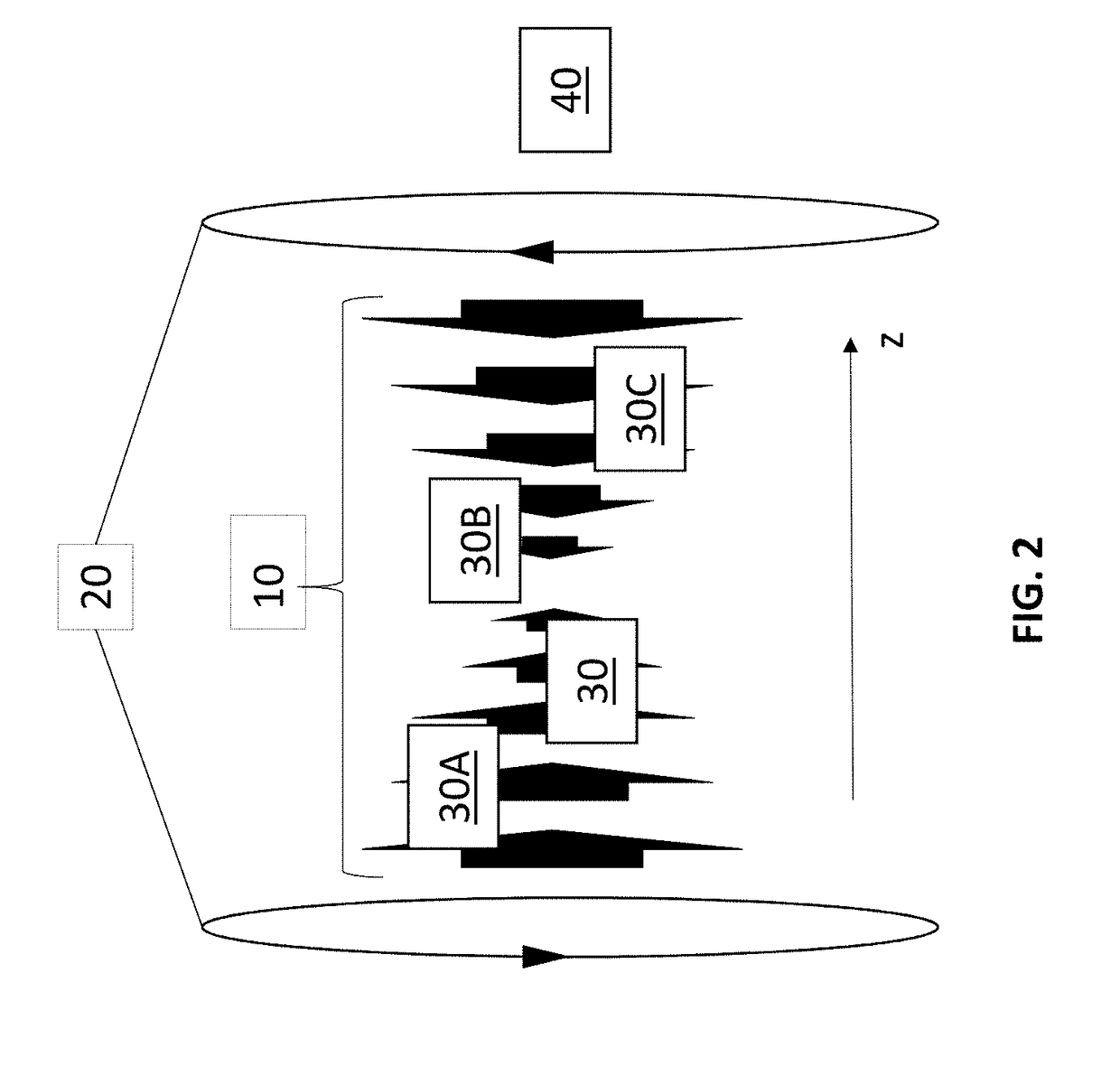System for continuously calibrating a magnetic imaging array
a magnetic imaging array and continuous calibration technology, applied in the field of magnetic imaging array calibration, can solve problems such as additional complications
- Summary
- Abstract
- Description
- Claims
- Application Information
AI Technical Summary
Benefits of technology
Problems solved by technology
Method used
Image
Examples
example 1
[0027]As an example, a simple magnetic imaging array has been constructed out of three optically-pumped magnetometers (OPMs) 50 as shown in FIG. 5. Each OPM 50 measured magnetic field(s) in two nearly orthogonal directions giving two channels of output data each. A schematic diagram of the imaging array is shown in FIG. 5. Three coils 31A, 31B, and 31C, were wrapped around each of three spheres 52 in nearly orthogonal directions serving as three dipolar sources. The spheres 52 were arranged and their relative positions and orientations measured carefully. The magnetic field of each of the dipolar sources was calculated relative to the sources themselves. Oscillating non-target magnetic fields were applied to the nine dipoles 31A, 31B, and 31C at modulation frequencies of 77 Hz, 78 Hz, 79 Hz, 80 Hz, 81 Hz, 82 Hz, 83 Hz, 84 Hz, and 85 Hz, respectively. The fields were recorded continuously in each of the six channels of the three OPMs 50. In order to record data with the OPM array sim...
example 2
[0028]The above example described how the present invention was used to continuously calibrate the positions, orientations and the overall gain of the imaging array. In the current example the bandwidth and related frequency dependence of the gain were continuously calibrated. Since in most OPMs, the bandwidth depends on laser parameters as well as DC background fields, it is prone to drift and requires frequent recalibration. In this example, a current dipole was continuously driven with the sum of several sinusoidal modulations at 100 Hz, 200 Hz, 300 Hz and 400 Hz of the same amplitude. The magnetic field was recorded continuously. With a bandwidth of the OPM around 150 Hz, the peaks in the power spectrum corresponding to these modulation fields were clearly seen to decrease with higher frequency. Notch filters were applied around the modulation peaks to the time series in order to minimize the effect of the modulation on the data. The amplitudes of the modulation fields at the di...
PUM
 Login to View More
Login to View More Abstract
Description
Claims
Application Information
 Login to View More
Login to View More - R&D
- Intellectual Property
- Life Sciences
- Materials
- Tech Scout
- Unparalleled Data Quality
- Higher Quality Content
- 60% Fewer Hallucinations
Browse by: Latest US Patents, China's latest patents, Technical Efficacy Thesaurus, Application Domain, Technology Topic, Popular Technical Reports.
© 2025 PatSnap. All rights reserved.Legal|Privacy policy|Modern Slavery Act Transparency Statement|Sitemap|About US| Contact US: help@patsnap.com



